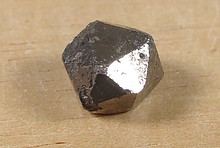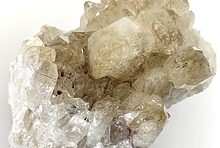Learning CenterWhat is a mineral?The most common minerals on earthInformation for EducatorsMindat ArticlesThe ElementsThe Rock H. Currier Digital LibraryGeologic Time
搜索矿物的性质搜索矿物的化学Advanced Locality Search随意显示任何一 种矿物Random Locality使用minID搜索邻近产地Search Articles搜索词汇表更多搜索选项
╳Discussions
💬 Home🔎 Search📅 LatestGroups
EducationOpen discussion area.Fakes & FraudsOpen discussion area.Field CollectingOpen discussion area.FossilsOpen discussion area.Gems and GemologyOpen discussion area.GeneralOpen discussion area.How to ContributeOpen discussion area.Identity HelpOpen discussion area.Improving Mindat.orgOpen discussion area.LocalitiesOpen discussion area.Lost and Stolen SpecimensOpen discussion area.MarketplaceOpen discussion area.MeteoritesOpen discussion area.Mindat ProductsOpen discussion area.Mineral ExchangesOpen discussion area.Mineral PhotographyOpen discussion area.Mineral ShowsOpen discussion area.Mineralogical ClassificationOpen discussion area.Mineralogy CourseOpen discussion area.MineralsOpen discussion area.Minerals and MuseumsOpen discussion area.PhotosOpen discussion area.Techniques for CollectorsOpen discussion area.The Rock H. Currier Digital LibraryOpen discussion area.UV MineralsOpen discussion area.Recent Images in Discussions
Identity HelpChannel dredging heap in Santa Rosa, California, Franciscan formation

7th Mar 2024 01:42 UTCPaul Hernday
Questions Answered
Can it scratch glass? : No
Can you scratch it with your fingernail? : No
Is it light/heavy for the size? : Normal

7th Mar 2024 01:50 UTCPaul Hernday

7th Mar 2024 02:34 UTCTed Hadley
It is formed by low temperature - high pressure alteration of olivine (lherzolite-dunite) and olivine rich basalt usually deep within the subduction zone where one tectonic plate dives under another at a continental margin.

7th Mar 2024 05:16 UTCPaul Hernday

7th Mar 2024 20:56 UTCTed Hadley
My experience is that serpentinite rock splits where it wants. The combination of being relatively soft, having no internal bedding structure, and having formed under very high pressure makes breaking random, and usually not where you want.
The rock is a mix of lots of things, including magnetite, clinochlore, garnets, etc. The colors do not necessarily indicate anything in particular.

8th Mar 2024 00:32 UTCPaul Hernday

25th Mar 2024 21:50 UTCPaul Hernday
'

25th Mar 2024 21:57 UTCPaul Hernday

29th Mar 2024 05:19 UTCPaul Hernday
Regarding the tan coating of serpentine rocks that I mentioned above, I've been scouring the web for it, and found this image, in which the upper third of the rocks have that same color coating. Maybe just different kind of rock, though. I've found more samples of serpentine-ish rock in Santa Rosa creek beds, small through huge in size, all with this sort of coating. The question of what this coating is, has really got my attention. I cracked open a small sample and noticed that the tan material is also inside as thin coatings or veins. But not the classic parallel strands of chrysotile, possibly another configuration, and possibly weathered. Can you connect me with anyone who might share this interest, to figure out what that material is? My next step is to scrape a bit of it off and look at it under 40x - 100x microscope and see if it has a stranded nature. Thanks - Paul

29th Mar 2024 11:50 UTCBen Grguric Expert
You need to make your microscope into a polarising one, see page 187 in Donald Peck's book on mineral identification. You can then do some simple optical tests on fragments of the fibres.

29th Mar 2024 18:05 UTCPaul Hernday

29th Mar 2024 21:04 UTCBen Grguric Expert




版权所有© mindat.org1993年至2024年,除了规定的地方。 Mindat.org全赖于全球数千个以上成员和支持者们的参与。
隐私政策 - 条款和条款细则 - 联络我们 - Report a bug/vulnerability Current server date and time: 2024.4.27 06:20:13
隐私政策 - 条款和条款细则 - 联络我们 - Report a bug/vulnerability Current server date and time: 2024.4.27 06:20:13














